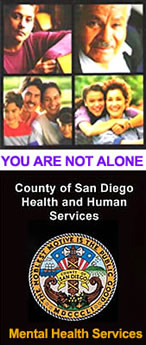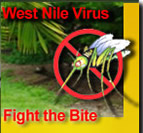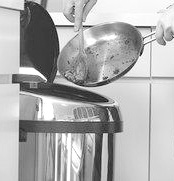IMPORTANT REMINDER ABOUT |
|
FOOD POISONING ....Summer is prime time for foodborne illness — also known as "food poisoning" —and when this happens, could be a dangerous risk to take for everyone specially when it happens with babies, toddlers and olderpeople. That’s why every Summer it is needed to make a public reminder about how to be safe from food related illness and we will hear and read similar messages about it from all the health authorities who are commited to help to all of us to be safe. To know how important is to care about it we need to know that The Center forDisease Control receives between 10 000 and 20 000 reports of food poisoning each year and the number of unreported cases may be up to 100 times greater. Foodborne illnesses do increase during the summer because more people are eating in outdoors away from home and the necessary hygienic conditions with the safety controls that a kitchen provides — thermostat-controlled cooking, refrigeration, and washing facilities — additionally everyone, will loose the attention for food safety and the necessary hygienic conditions for being distracted with the recreational activities and the rush to enjoy the most at the beach, camping, hiking,boating or in a barbecues with friends. It is normal to try to enjoy our Summer and if someone gets sick it will not be fun at all, so everybody should be aware and keep in mind that everywhere,even in our kitchen, are bacterias present throughout the environment in air,soil, water, and in the bodies of people and animals; and these foodborne bacterias need moisture to flourish, and grow fastest at temperatures from 90 to 110°F; and summer weather is often hot and humid “which are the ideal conditions” for the harmful bacteria to quickly multiply on food. When this happens, someone eating the food can get sick. Here is what we could do at home o CLEANING Unwashed hands and contaminated surfaces are a prime cause of foodborne illness so we need to wash hands & surfaces often. Wash your hands with hot, soapy water before and during handling food and after using the bathroom, changing diapers, and handling pets.And clean often all surfaces with a mix of soapy water and a spoon of clorox. o SEPARATE Raw Meat and poultry will contaminate your hands, the knife and surfaces where the juices drop . In order not to cross-contaminate, you need to avoid raw meat juices from coming in contact with ready-to-eat food and use separate cutting boards for cutting vegetables, and wash plates, utensils, and cutting boards that held the raw meat or poultry. o COOK TO PROPER TEMPERATURES Food safety experts agree that food is safely cooked when it is heated for a long enough time and at a high enough temperature to kill harmful bacteria that cause foodborne illness.So have your thermometer always ready and follow the next temperatures guide. o CHILL Holding food at an unsafe temperature is a prime cause of foodborne illness. Always keep the food cold! Don’t let food sit out for more than two hours or just a half hour if the outside temperature is above 90*F.Refrigerated and freeze perishable food,prepared foods, and leftovers within 2 hours and try to never over-stuff the refrigerator since cold air must circulate to keep food safe and to last longer. When you are planing your meals do not defrost or marinate food at room temperature and for safety and better defrost, put the meats or poultry to defrost at the refrigerator lower level inside a plate that handle the juices and will not let the juices contaminate while spreading inside.Try do this at night before going to the bed. The Key for enjoying our summer and being safe from food related illness is to plan ahead to ensure in take necesary precautions while cooking and when handling snacks and meals as we travel For Outdoors Here is What we Could do o FOR CLEANING When eating away from home, find out if there's a source of potable (safe drinking) water: If not or you are not sure, be prepare bringing water for preparation and cleaning. An extra help is to pack clean, wet, disposable washcloths or moist towelettes and paper towels for cleaning hands and surfaces. o FOR PLANING Chilling a block of ice will keep things colder than cubes.Try freezing water in old milk cartons as a source of block ice. Packing a full cooler; it will maintain its cold temperatures longer and to preserve the cold temperature of the cooler by replenishing the ice as soon as it starts meltin. Keep the cooler in the coolest part of the car, and place in the shade or shelter like buried partially in the sand or covered with blankets or umbrella, out of the sun. • Consider packing canned beverages in one cooler and perishable food in another cooler, because the beverage cooler will probably be opened frequently. o FOR COOKING Wash your hands often and definetely before handling food, cooking , after being in contact with raw meat or poultry and before touching another food. Cook meat and poultry completely at the picnic site. Meat and poultry cooked on a grill often browns very fast on the outside, so be sure that meats are cooked thoroughly. Check them with a food thermometer. Partial cooking of food ahead of time allows bacteria to survive and multiply to the point that subsequent cooking cannot destroy them. The safety temperatures are for cold food keep the cold under (40*F) and for hot foods keep the hot over (140*F) and remember that cooked eggs should be cooked until the yolks are firm. o L By keeping the simple safety precautions mentioned in mind when planing, it will be sure that everyone can look forward to a fun, healthy summer season of outdoor gatherings, cook-outs,picnics and family vacations. By keeping the simple safety precautions mentioned in mind when planing, it will be sure that everyone can look forward to a fun, healthy summer season of outdoor gatherings, cook-outs,picnics and family vacations.
|
|
About Us | Privacy Policy | Disclaimer | Contact Us TEL. 619-427-4111 EMAIL: health@infooption.com Salud + Health Info is for information and educational purposes only. You should not rely on this information as a substitute for personal medical attention, diagnosis or hands-on treatment. If you are concerned abut your health or that of a child, please consult your family’s physician or health provider immediately and do not try and diagnose yourself. Copyright © 2001-2006 Info Option Network |
|
Bienvenido a la primer revista dedicada al cuidado de la salud
 info
info
The first, the best & the only English & Spanish Magazine in San Diego, California
| Contact us |
| More about Food poisoning |
| Salmonella Case Reported In California and the County of San Diego |
| Tomato Outbreak Frequently Asked Questions |
| FDA Warns Consumers Nationwide Not to Eat Certain Types of Raw Red Tomatoes |
| Red Tomato Warning Expanded Nationwide |
| ~San Diego INFO OPTIONS |
| Aging & Independence Services |
| Tobacco Control |
| Housing Commission |
| Caregiver Coalition |
| American Lung Association |
|
County of San Diego Control Vector Program DEH |
|
|
|
|
|





 eftovers?
eftovers?